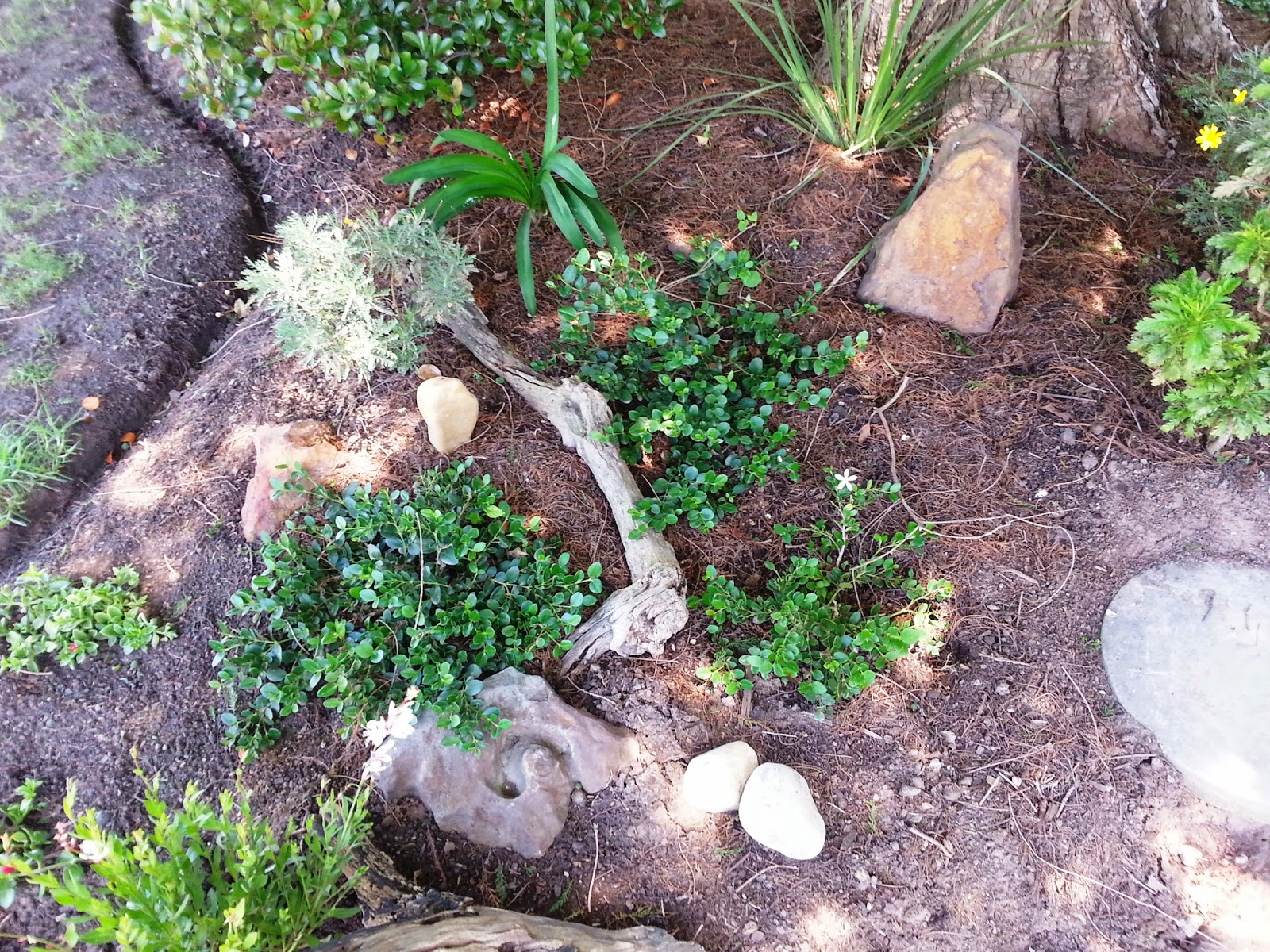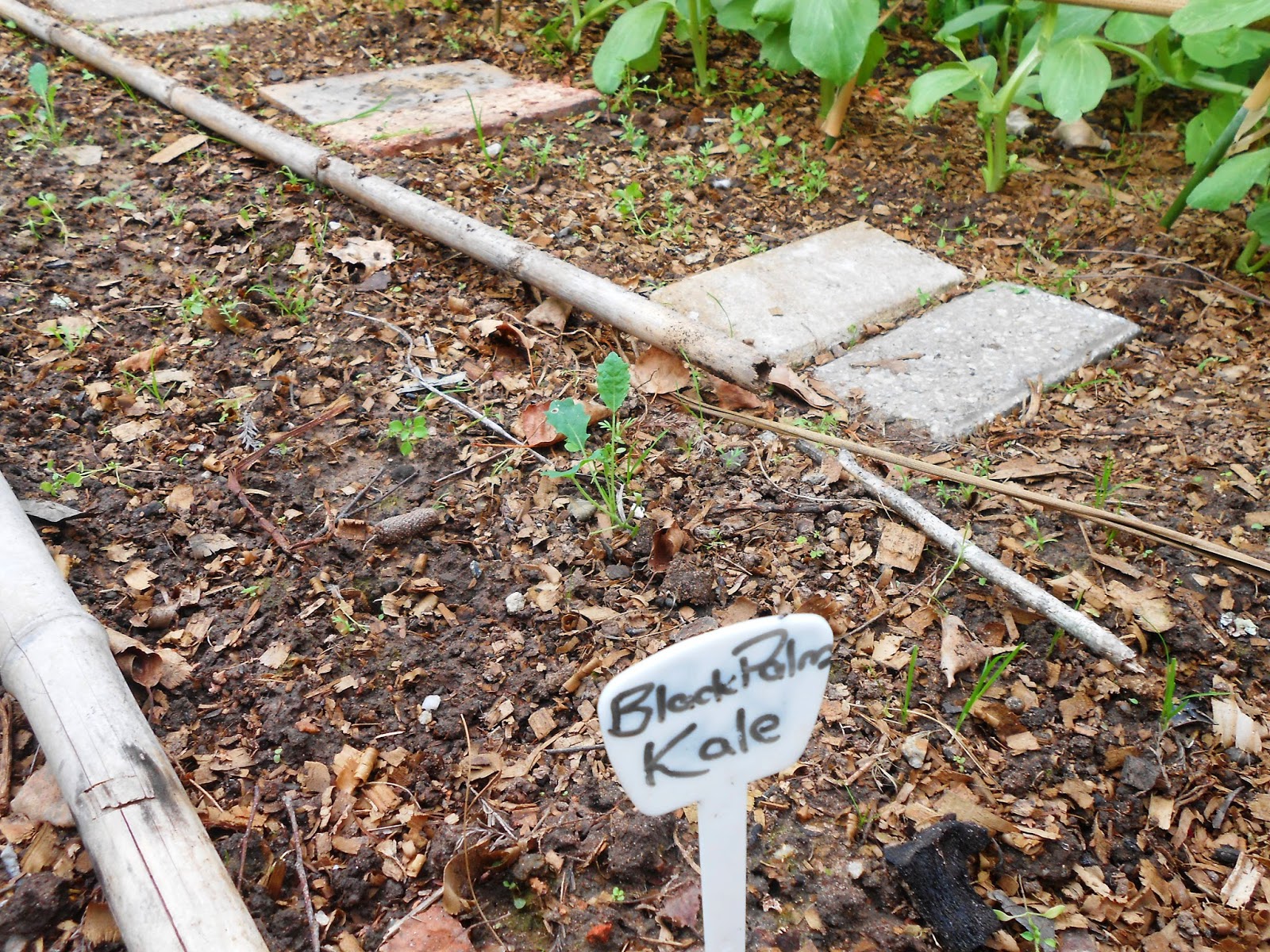Welcome to my second instalment of fruit and veg garden planning. The last time I blogged about garden planning it was the beginning of our southern autumn and I was very hopeful and excited about the possibilities of my cold season garden. This time around I'm blogging midway through the spring, so therefore this post is about planning for warm planting season.
The success of my winter garden was a mixed bag of welcome delights and bitter disappointments. I can quite happily state though, that the failures in my winter garden was less to do with inadequate planning and more to do with being over-enthusiastic. Yes, once again I made some mistakes in my garden, but I will post on this in future. This post is about informing you on my plans for my three main fruit and veg beds, and the subsequent exertion put into getting ready for the summer season.
 |
| Backyard veg patch worked over and ready for compost/Agterplaas groentetuin is omgespit en gereed vir kompos |
Calculating how much space you have
This season I spent the least amount of time on this step. You see; I have a mild case of OCD so I spent hours upon hours of measuring, re-measuring, calculating and re-calculating the size of all my beds in March of this year. This time around I just pulled up my Excel spreadsheet... and Bob's your uncle! I will admit that it took some minor fiddling here and there as my calculations were a bit off last time. As I am ever the perfectionist, this minor error had to be fixed. Just Had to!
The total size of my three main beds is 12.84m2 of which 7.72m2 is usable for fruit and veg production. This is due to certain areas being in the deep shade during certain periods of the day, or simply by perennials taking up the space. I know my space is severely limited, but one has to work with what one has, hey?
Deciding on which veggies or varieties to grow
Which summer fruit and veggies do we like to eat most?
If I go according to that list, my planning measures up in the following way:
I already have a Granny Smith apple in my fruit bed. It's been in my garden about a year and a half and still going strong, but won't bear fruit for a while yet. I already bought my baby marrow (courgette/zucchini) seed at our local Agri store, but won't do butternuts again as they take up too much space. I also already have my dry beans, ready to be sowed. They're leftovers from last year's planting season. I don't have enough space for either cucumbers or grapes, so will still have to source those from our fantastic local fresh produce store, but the peppers were left in my garden. I treat them as perennials since they die back almost completely in the cold season, but always come back into their own late September. I saved three of the sweet potatoes I harvested from the garden in April to make new slips with. Currently the slips are beautiful, and forming roots in a little plastic tub filled with rain water. Tomatoes? I purchased twelve Moneymaker seedlings and cherry tomato plants from local nurseries.
 |
| Sweet potato slips/Patatranke |
Which fruit and vegetables worked in my garden last spring/summer?
Which plants or vegetables benefit most from each other?
Companion planting is a subject every organic backyard farmer must familiarise him/herself with. This is due to the fact that bugs and pests love fresh veggies just as much as we do, especially in a humid climate like the Garden Route's. I won't spray any (non-organic) pesticides, so the fruit and veggies are even more of a temptation to the little critters. The best way to solve, or at least minimise, this problem is to inter-plant fruit and veggies with beneficial herbs and plants and also plant trap crops like nasturtiums. The former assist and provide nutrition to the fruit and vegetables and the latter draw the pests away from our treasured produce. The idea behind companion planting is to create a small and balanced eco-system in your garden, thereby not providing fodder for bugs by planting a ton of the same plant or species. The best South African advice on companion planting is to be found on Livingseeds' website and another good table can be found here.
Which plants are most suited to my soil type and amount of shade?
This is a question that can only be answered with a great degree of certainty after the third or fourth growing season. Yes, as a gardener you will probably know what kind of soil you're blessed (or cursed with), and therefore which fruit and veggies are best suited to your property, but even this knowledge might be misleading. My blessing is the fact that my parents frequently composted in years gone by. My curse is that our natural soil is rich in clay, but luckily the same parentals sorted most of this out by extensively applying lime. I have never actually done a pH test on my soil so I can't say without doubt whether I have acid or loamy soil, but my bet is on good garden soil (somewhere between the two), as it is rich and black in colour (minus the small bits of clay left in some spots underground).
Drawing up a garden plan
I once again used the fantastic GrowVeg Garden Planner tool to assist in this task. This time around I decided to purchase a year-long membership. This enables me to not only draw up multiple garden plans without deleting and re-doing them one by one, but the tool also remember what I planted in a specific space before. This will help me with the next season's planning and planting, as the tool will give me crop rotation warnings etc. Brilliant hey!
I've decided to share my Backyard Veg Patch plan with my avid blog readers again, if only to show you how the tool assists in the whole process... and how I've improved in utilising it haha. One thing I realised is that you can select the variety as well as the plant type. Practice makes perfect. Without further ado - here is my plan:
 |
| Backyard veg patch plan/Agterplaas tuin plan (copyright www.growveg.com) |
At least I can say with all honesty that this phase of my planning took a fraction of the time this season. Thank you GrowVeg!
Preparing the soil
As I like to believe I learn from my mistakes, I decided to delay my summer season planting with a month or so this time year. My region experience most rainfall in Oct/Nov and Mar/Apr, although we do get rain most months of the year. Last year the combination of granny's impatience and my eagerness led us to sow and plant most of our warm season crops late August already. Mistake! Not only did some seeds drown in the heavy October rains, but the tomatoes and beans were more susceptible to blight, as the plants which did make it had to struggle through the whole wet season.
This time I only started to prepare my beds early October, and plan to plant my beans, courgettes, sweet potatoes and tomatoes late October. I can almost hear some readers gasp in horror. Surely one cannot sow tomatoes as late as that?! No dear readers, I've also learned from my second mistake - plant seedlings wherever possible and stay away from seeds. I learned this lesson by comparing my tomato production (dismal) to my best friend's 100m away in the same neighbourhood (bountiful). Yes, sometimes one can learn by observation of others.
As stated in my previous post, the MOST IMPORTANT TASK IN GARDEN PLANNING is soil preparation. I'm using upper-case again to emphasise just how important this step is. The two golden rules I've stayed with this year is composting and fertilising.
 |
| Unsatisfactory compost mixed with organic manure/Middelmatige kompos gemeng met organiese hoendermis |
At the risk of becoming repetitive, the rule of thumb with composting is to add around 2 bags of good, organic compost to every square meter (roughly the equivalent of 2 inches of compost as a top layer). As I wasn't a hundred percent happy with the quality of the compost I purchased for most of my garden (it didn't have the healthy slight farm stink to it and was also too fine for my liking), I decided to add roughly one part pure organic chicken manure to two parts (unsatisfactory) compost. Problem solved. Unfortunately the organic chicken farm where I usually purchase my manure ran out. After briefly wondering how a chicken farm runs out of chicken poo I decided to stock up at the other organic chicken farm in the vicinity. Tip to future buyers from said farm: ask for chicken compost, as the cashier doesn't know it by any other name... and I mean any other. Luckily I also bought four big bags of great, organic compost for my backyard veg patch elsewhere, so those didn't need added manure.
 |
| The good stuff - Grow Green Organics compost/Swart goud - Grow Green Organics kompos |
A rule of thumb with fertilising is to add about 150g composted chicken manure to every square meter - around fruit trees especially. 50g equals about a handful. A good organic option is either Bounce Back (around R60.00 for a 5kg bag). A cheaper option is Rescue, which is also pelletised chicken manure, but comes in a less snazzy bag. I opted for the latter and bought 4kg for only R40.00 (a 17% saving) at Norgarivier Nusery on the Old Airport Road.
I did most of the composting about a week ago, and did the fruit tree fertilising a few days ago. Now I just have to wait the required two weeks after composting to get in my selected vegetables for the summer season. What did I choose to plant this time around?
- Contender bush beans (seed): as they produce quicker than pole beans and don't cast shade on other plants in my very limited gardening space.
- Caserta courgettes/baby marrows (seed): as they require a fraction of the space gobbled up by butternuts or other pumpkin varieties
- Cucamelons (seed): as they are simply too adorable to resist
- Sweet potatoes (slips): after the success of last year I would be crazy not to plant it again!
- Cherry tomatoes (seedling): as they grow and produce quickly and are more hardy to diseases than big tomatoes.
- Normal sized Moneymaker tomatoes (seedling): the name convinced me ;-)
And that is my summer season garden planning story... in detail... maybe too much detail
(... but who cares...)










































.JPG)
a.jpg)








